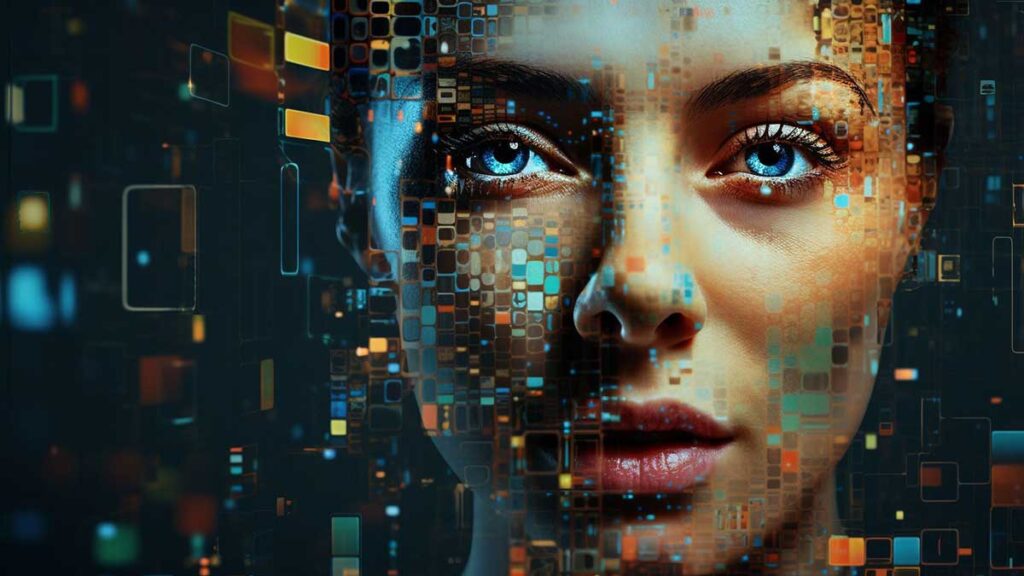
DeepFake as a tool to manipulate people
More and more often I hear: “Oh, no, this is the very truth! They were showing it on TV!”. Another time, “I saw it on video, and not on TV, but in an independent media outlet!”
How secure is DeepFake technology?
DeepFake is a technology that uses artificial intelligence (AI) to manipulate video or audio recordings. In them, it appears that someone is saying or doing something that they never actually did.
This technology can be used for malicious purposes, such as spreading misinformation, damaging reputations, or creating fake news.
How does DeepFake work?
DeepFake technology is based on two main processes:
- Data Collection: To create a DeepFake, the AI algorithm needs a large enough amount of data about the face or voice of the person it is trying to fake. This data can be collected from various sources. Collected from social media, movies or TV shows.
- Image/Sound Synthesis: Once the AI algorithm has enough data, it can use it to synthesize new images or sounds. They look like they are real. This is done through a process called “generative modeling”. In this process, the algorithm learns the patterns according to the data and then uses them to create new data. The new clips are similar, but not real, not real.
How can DeepFake be used to manipulate people?
DeepFake can be used to manipulate people in various ways, for example:
- Spreading misinformation: DeepFake videos can be used to spread fake news or create the impression that someone has said or done something. And he really isn’t. This can be used to undermine trust in institutions or a particular leader, to sow discord or to manipulate public opinion.
- Damage to reputation: DeepFake videos can be used to damage someone’s reputation. For example, by creating a video that shows him saying or doing something offensive or illegal.
- Creation of fake news: DeepFake videos can be used to create fake news articles or to manipulate existing news articles. They can be used by televisions and other visual media. This can be used to mislead people or spread propaganda. Several different versions are often used, sometimes asserting completely opposite things, the viewer gets “lost” in them and it is even more difficult to determine which is the truth.
The saddest thing is that the victims usually cannot defend themselves in any way. Or even if they defend themselves, DeepFake has already played its role: suspicions have been raised, reputations have been damaged, trust has been removed from someone or an institution.
How to protect yourself from DeepFake?
DeepFake technology is still in its early stages of development, but it is becoming more sophisticated and realistic, as a person usually trusts his own eyes the most.
It is important to be aware of the potential dangers of DeepFake and take steps to protect yourself from manipulation. Here are some tips:
- Always be skeptical of what you see and hear online: Don’t believe everything you see or hear online. Don’t hold on unreservedly to the thought that if you’ve seen it with your own eyes, then it’s true. Especially if it seems too good to be true. Or if it’s too shocking, it’s probably not true.
- Check the source: Before sharing or believing information, check the source. Check it from a minimum of three or more different places that you still trust. (Personally, I trust only myself these days, and not every time! 😉 ) Make sure the information comes from a reliable source and is well researched. Also research the sources from where the news is claimed to have come from, if any. If there is none, or they are mentioned in general terms, then most likely what is written is completely fabricated or at least partially false.
- Pay attention to the details: DeepFake videos may contain subtle clues that indicate they are not real. For example, there may be slight inconsistencies in lip movement, audio or lighting timing, contour drift, color palettes, contrast and brightness, face blur, or digital artifacts.
- Use your common sense: If something seems too good to be true, it probably isn’t. If something seems too shocking, it’s also very likely not true. If a certain person is put in unreal or atypical circumstances, it is likely that they have never been there. Use your common sense to judge whether and how likely any information is to be true. Be pessimistic about such claims – dismiss the event as false until you have irrefutably proven it to be true. A positive attitude does not contradict this pessimism, do not limit it with such thoughts.
But let’s not be so pessimistic. It is important to note that DeepFake technology can also be used with a positive nose. With DeepFake, realistic special effects can be created for movies, video games, or hilarious comedy videos. Some are created for entertainment or educational purposes.
However, it’s important to be aware of the potential dangers of DeepFake and be able to recognize fake videos when you see them.
DeepFake should be used responsibly and everyone should be aware of the potential dangers of abusing it.
If you’re not sure if a video is real, it’s best to treat it as suspicious and not share it, no matter how tempting it is – that’s what the malicious person is counting on – to influence you enough to share it and get it deleted the original source.
The creators of such videos often try to hide them from the public to avoid detection. They also try to hide their authorship to make it harder to identify the videos as fake.
Bulgaria is not behind at all in DeepFake technology
Videos used to spread misinformation or to damage the reputation of various people and institutions appear and disappear in Bulgaria as well. Some have even become quite popular, I am deliberately not mentioning any names so as not to further promote the scam:
- In 2023, a DeepFake video showing a Bulgarian politician making offensive statements was circulated online. The video was fake, but managed to damage the reputation of a politician.
- In 2024, a DeepFake video showing a Bulgarian journalist reading fake news was broadcast on national television. The video was fake, but managed to fool many viewers.
You can check the following resources for more information about DeepFake in Bulgarian:
- Article on the Bulgarian National TV about DeepFake: https://bnt.bg/news/kak-da-napravite-deepfake-video-i-izobrazhenie-316418news.html
- YouTube video explaining what DeepFake is: https://www.youtube. com/hashtag/deepfake
- Monographic work of Colonel Assoc. Dr. Petko Dimov and Brigadier General o.r. Dr. Elislav Ivanov from the Institute for Prospective Studies for the Defense of Fake News https://rndc.bg/wp-content/uploads/2020/05/FakeNews-21-05-2020-pechat.pdf
It is important to combat the disinformation spread through DeepFake videos – not only by detecting it, but also by stopping it from spreading and not sharing the fake videos.
DeepFake as a tool for human manipulation
By being informed and vigilant, we can help protect ourselves and others from manipulation.
